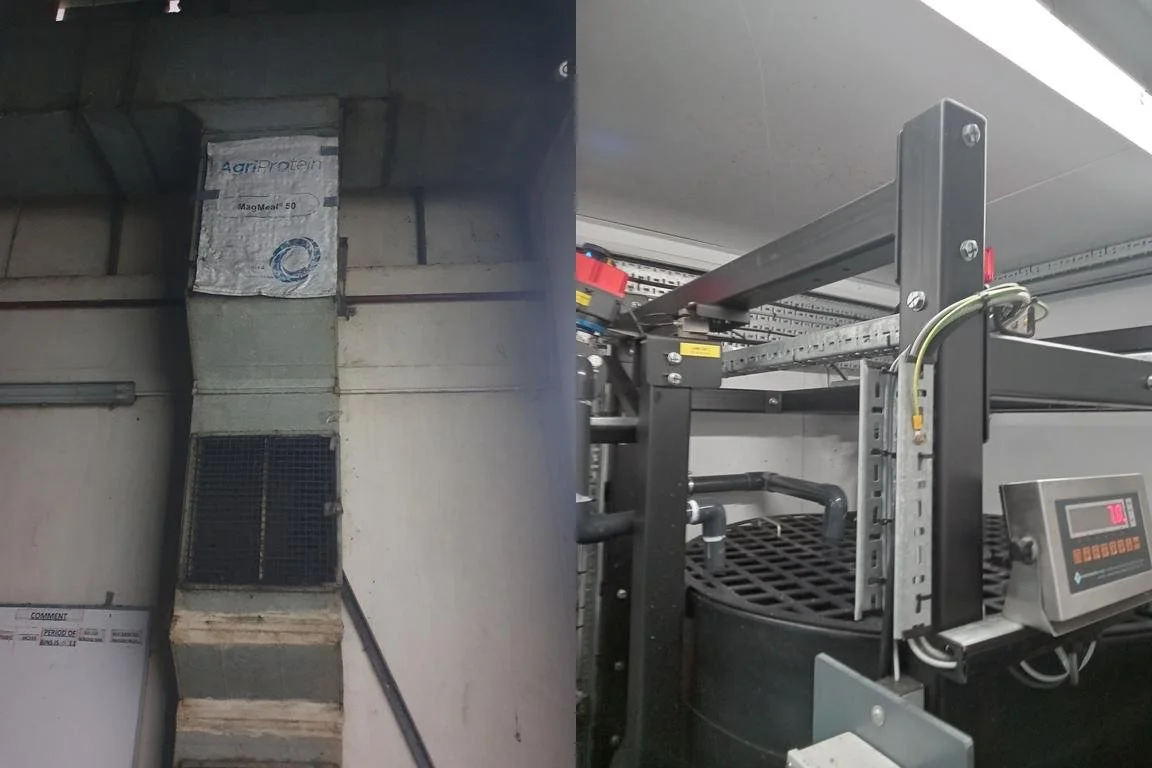The 5 Myths Holding the BSF Industry Back (And What to Do Instead)
Over the past year, I’ve travelled across 14 countries and visited over 50 black soldier fly (BSF) companies as part of my Nuffield Farming Scholarship. From the soybean fields of Brazil to modular farms in Kenya, from high-tech factories in Denmark to frass-focused compost systems in Rwanda — I’ve seen the good, the bad, and the baffling.
This blog series distills what I’ve learnt into practical, occasionally blunt, insights that I hope will help others avoid the common pitfalls of this industry and build something better.
Let’s start with the top five myths still holding us back:
Myth 1: “Once we produce at scale, demand will follow.”
Reality: That’s not how markets work — not even for protein.
One of the most dangerous assumptions in the industry is that demand is just waiting in the wings, ready to soak up however many tonnes of larvae or frass you can throw at it.
But that’s not how it’s playing out. The reality is that most farmers, feed manufacturers, and pet food brands still don’t know how BSF products benefit them — or why they should switch.
It’s not just about producing BSF. It’s about selling it — clearly, consistently, and with a customer need in mind. Want to help a broiler farmer improve FCR? Prove it. Want to sell frass to a veg grower? Show the yield data. Want to offer waste solutions to a council? Beat anaerobic digestion on cost.
Myth 2: “Our IP is what will make us successful.”
Reality: Great — but if you can’t sell it or scale it, it’s worthless.
From Chile to Cambridge, I saw the same pattern: early-stage companies obsessed with patents, secrecy, and “what we’ve developed that no one else has.” Meanwhile, the fundamentals — cost of production, route to market, customer need — were often left behind.
Yes, intellectual property is important. But in a nascent industry, collaboration trumps protectionism (pun absolutely intended). We don’t need more secrets. We need more sharing — of cost, knowledge, infrastructure and mistakes.
You don’t get industry credibility by hiding behind an NDA. You get it by delivering results.
Myth 3: “More automation = more efficiency.”
Reality: Not always. Sometimes it just = more cost.
Automation can reduce labour cost. But let’s take a first principles approach: What problem are you trying to solve, and is automation really the best solution?
If the problem is heat, is a fan cheaper than a sensor? If the problem is sieving, is gravity your friend before you reach for robotics? The best BSF businesses I saw weren’t necessarily the most high-tech — they were the ones with processes that made sense, and costs that didn’t spiral.
Myth 4: “We need to grow fast or be left behind.”
Reality: The industry is so early, we’re not even in the same race yet.
The global soy market is 420 million tonnes. Fishmeal is 6 million. Insect protein? Just a blip. We are not competing with each other — we are competing with indifference, regulation, and soy’s scale advantage.
What we need is patience, proof, and profitability. This is a marathon, not a sprint. The winners will be the ones who can survive the long game, not the ones with the flashiest pitch deck.
Myth 5: “Getting investment will solve our problems.”
Reality: Investment makes bad decisions bigger. Only good business makes money.
I’ve spoken to founders who raised millions and still couldn’t make it work. Agriprotein, Enterra, Ynsect — all pioneers, all now cautionary tales. The problem wasn’t ambition. It was complexity, timing, and cost.
BSF is hard. You’re not just a farmer. You’re a biowaste handler, a fertiliser marketer, a protein processor, a logistics company — and now a carbon credit trader too.
Because here’s the truth: profitability in this industry doesn’t come from a single sale. It comes from stacking revenue streams — frass, oil, live larvae, gate fees, carbon credits, and yes, even protein. The smartest models I saw were the ones that maximised every output.
So what do we do instead?
Here’s what I saw working:
Start small, test fast. Learn the unit economics before you scale.
Stack revenue streams. Don’t bet everything on protein — frass, oil, gate fees, carbon credits, and live larvae all matter.
Collaborate early. Share costs. Share insight. Share infrastructure (no, seriously — collaboration trumps protectionism).
Focus on demand. Start with what the customer values — not just what you can produce.
Work with your customers and find out what the value is to them
The industry doesn’t need more noise. It needs more truth. More practicality. More people who’ve built something that works — and are willing to help others do the same.
Next up in the series: "The One Metric That Matters in BSF Farming (And Why No One Talks About It)."




